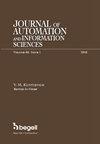使用度量学习、学习率调度器和增强改进人脸识别模型
Q3 Engineering
Journal of Automation and Information Sciences
Pub Date : 2021-11-01
DOI:10.34229/1028-0979-2021-6-9
引用次数: 0
摘要
人脸识别是计算机视觉的主要任务之一,由于其实际意义和广泛的科学家的兴趣而备受关注。它有许多应用,这导致了这一领域的大量研究。尽管自计算机视觉诞生以来,这一领域的研究一直在进行,但只有借助卷积神经网络才能取得良好的结果。在这项工作中,对卷积神经网络之前的面部识别方法进行了比较分析。考虑了度量学习方法、扩展和学习率调度器。对卷积神经网络的改进方法进行了大量的实验和比较分析。得到了一种通用的人脸识别模型训练算法。在这项工作中,我们使用SE-ResNet50作为唯一的神经网络进行实验。在人脸识别中,度量学习是一种能够达到较高准确率的方法。过度拟合是神经网络的一个大问题,特别是因为它们有太多的参数,通常没有足够的数据来保证模型的泛化。额外的数据标记既耗时又昂贵,因此有一种方法叫做增强。增强人为地增加了训练数据集,因此,正如预期的那样,该方法在所有实验中相对于原始实验的结果都有所改善。在这项工作中,不同程度和更积极的增强形式导致了更好的结果。正如预期的那样,最好的学习率调度器是带预热和重启的余弦调度器。这个时间表只有很少的参数,所以它也很容易使用。总的来说,使用不同的方法,我们能够获得93.5%的准确度,比基线实验好22%。在接下来的研究中,我们计划不仅要考虑改进人脸识别模型,还要考虑改进检测。人脸检测的准确性直接取决于人脸识别的质量。本文章由计算机程序翻译,如有差异,请以英文原文为准。
IMPROVING FACE RECOGNITION MODELS USING METRIC LEARNING, LEARNING RATE SCHEDULERS, AND AUGMENTATIONS
Face recognition is one of the main tasks of computer vision, which is relevant due to its practical significance and great interest of wide range of scientists. It has many applications, which has led to a huge amount of research in this area. And although research in the field has been going on since the beginning of the computer vision, good results could be achieved only with the help of convolutional neural networks. In this work, a comparative analysis of facial recognition methods before convolutional neural networks was performed. A metric learning approach, augmentations and learning rate schedulers are considered. There were performed bunch of experiments and comparative analysis of the considered methods of improvement of convolutional neural networks. As a result a universal algorithm for training the face recognition model was obtained. In this work, we used SE-ResNet50 as the only neural network for experiments. Metric learning is a method by which it is possible to achieve good accuracy in face recognition. Overfitting is a big problem of neural networks, in particular because they have too many parameters and usually not enough data to guarantee the generalization of the model. Additional data labeling can be time-consuming and expensive, so there is such an approach as augmentation. Augmentations artificially increase the training dataset, so as expected, this method improved the results relative to the original experiment in all experiments. Different degrees and more aggressive forms of augmentation in this work led to better results. As expected, the best learning rate scheduler was cosine scheduler with warm-ups and restarts. This schedule has few parameters, so it is also easy to use. In general, using different approaches, we were able to obtain an accuracy of 93,5 %, which is 22 % better than the baseline experiment. In the following studies, it is planned to consider improving not only the model of facial recognition, but also detection. The accuracy of face detection directly depends on the quality of face recognition.
求助全文
通过发布文献求助,成功后即可免费获取论文全文。
去求助
来源期刊

Journal of Automation and Information Sciences
AUTOMATION & CONTROL SYSTEMS-
自引率
0.00%
发文量
0
审稿时长
6-12 weeks
期刊介绍:
This journal contains translations of papers from the Russian-language bimonthly "Mezhdunarodnyi nauchno-tekhnicheskiy zhurnal "Problemy upravleniya i informatiki". Subjects covered include information sciences such as pattern recognition, forecasting, identification and evaluation of complex systems, information security, fault diagnosis and reliability. In addition, the journal also deals with such automation subjects as adaptive, stochastic and optimal control, control and identification under uncertainty, robotics, and applications of user-friendly computers in management of economic, industrial, biological, and medical systems. The Journal of Automation and Information Sciences will appeal to professionals in control systems, communications, computers, engineering in biology and medicine, instrumentation and measurement, and those interested in the social implications of technology.
 求助内容:
求助内容: 应助结果提醒方式:
应助结果提醒方式:


